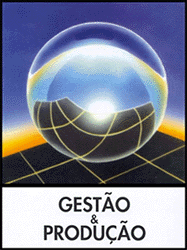resumo:
Nos últimos anos, a participação de fornecedores no desenvolvimento, produção e distribuição de produtos aumentou. Dessa forma, a sustentabilidade de uma organização depende cada vez mais desses parceiros. A avaliação da sustentabilidade dos fornecedores deve basear-se no tripé econômico, ambiental e social, denominado triple bottom line (TBL). Devido à recente adoção de métricas qualitativas relacionadas a questões ambientais e sociais na gestão de negócios, modelos que lidam com avaliações qualitativas baseadas em julgamentos de especialistas tornaram-se relevantes. Este artigo propõe um modelo de avaliação da sustentabilidade de fornecedores baseado na representação linguística fuzzy 2-Tuple, usando os critérios do TBL. Uma aplicação piloto envolvendo a avaliação de 11 fornecedores usando 13 critérios foi realizada em uma empresa que fabrica produtos agrícolas. Os resultados da aplicação indicam que o fornecedor 8 apresenta o melhor desempenho. Os critérios avaliados como os mais relevantes são programação de entrega e qualidade do produto. Devido ao uso da representação fuzzy 2-tuple, o modelo proposto apresenta algumas vantagens em relação aos modelos anteriores, como a capacidade de modelar critérios quantitativos e qualitativos, bem como categorizar o desempenho geral do fornecedor em grupos definidos pelos termos linguísticos.
Palavras-chave:
Avaliação da sustentabilidade de fornecedores; Fuzzy 2-tuple; Triple bottom line; Decisão multicritério

 Avaliação da sustentabilidade de fornecedores utilizando a representação linguística fuzzy 2-tuple
Avaliação da sustentabilidade de fornecedores utilizando a representação linguística fuzzy 2-tuple Thumbnail
Thumbnail
 Thumbnail
Thumbnail
 Thumbnail
Thumbnail



